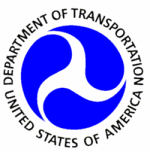Overall On-Time Rate Was Nearly 80 Percent
The on-time performance of the nation's largest airlines
improved in 2010 compared to the previous year, according to the
Air Travel Consumer Report released Thursday by the U.S. Department
of Transportation (DOT).

Information filed with the Bureau of Transportation Statistics
(BTS), a part of DOT's Research and Innovative Technology
Administration (RITA), shows that the 18 largest carriers reporting
on-time performance recorded an overall on-time arrival rate of
79.8 percent for January through December 2010, an improvement on
2009's 79.5 percent on-time arrival rate. During December 2010,
these carriers posted an on-time performance rate of 72.0 percent,
equal to the 72.0 percent on-time rate recorded in December 2009,
but down from November 2010's 83.2 percent rate.
The monthly report also includes data on chronically delayed
flights, lengthy tarmac delays, flight cancellations, and the
causes of flight delays filed with the Department by the reporting
carriers. In addition, the report contains information on airline
bumping, reports of mishandled baggage filed by consumers with the
carriers, and consumer service, disability and discrimination
complaints received by DOT's Aviation Consumer Protection
Division.
In December, the airlines who file on-time data with the
Department reported three domestic flights with tarmac delays of
more than three hours, down from 34 in December 2009. Data filed
with BTS showed there have been only 15 total tarmac delays of more
than three hours reported from May through December 2010 by the 18
airlines that file on-time performance data with DOT, compared to
584 during the same eight-month period of 2009. In December, the
carriers also reported that .0600 percent of their scheduled
flights had tarmac delays of two hours or more, up from .0200
percent in November.

December was the eighth full month of data since the new
aviation consumer rule went into effect on April 29, 2010. The new
rule prohibits U.S. airlines operating domestic flights from
permitting an aircraft to remain on the tarmac at a large or medium
hub airport for more than three hours without deplaning passengers,
with exceptions allowed only for safety or security or if air
traffic control advises the pilot in command that returning to the
terminal would disrupt airport operations. The Department will
investigate tarmac delays that exceed this limit.
The Department has also issued a rulemaking that would
significantly strengthen the protection afforded to passengers
stranded on the ground aboard aircraft for lengthy periods. In a
June 2010 notice of proposed rulemaking, the Department proposed to
increase the number of carriers that are required to adopt tarmac
delay contingency plans to include foreign air carriers and
proposed to increase the number of airports at which carriers must
adhere to such plans to include U.S. small and non-hub airports. In
addition, the Department proposed to require all carriers that must
adopt tarmac delay contingency plans to file data with the
Department regarding lengthy tarmac delays. The Department expects
to issue a final rule as early as April 2011, which will consider
all the comments received as well as the lengthy tarmac delays
experienced by a number of foreign carriers at John F. Kennedy
International Airport (JFK) during and after the Dec. 26, 2010,
blizzard and the resulting impact on passengers traveling on those
flights.
During December, when large parts of the country experienced
severe winter weather, the carriers canceled 3.7 percent of their
scheduled domestic flights, compared to 2.8 percent in December
2009 and 0.7 percent in November 2010. The number of canceled
flights with tarmac delays of more than two hours increased only
slightly, from 251 between May and December 2009 to 266 between May
and December 2010. There were 25 canceled flights with tarmac
delays of more than two hours in December 2010, down from 27 in
December 2009.
At the end of December, there was only one flight that was
chronically delayed – more than 30 minutes late more than 50
percent of the time – for three consecutive months. There
were an additional six flights that were chronically delayed for
two consecutive months. There were no chronically delayed flights
for four consecutive months or more. A list of flights that were
chronically delayed for a single month is available from BTS.

"The release of today's (Thursday's) data by DOT confirms
that the 3 Hour Rule and the Regulatory Passenger Bill of Rights is
actually making commercial airlines more efficient—so these
vitally important protections are not only common sense—they
make good economic sense also," Kate Hanni said. "Any day now, the
U.S. House will package together the FAA Reauthorization bill
– when they do, it's essential that the rules passed by DOT
are made permanent by legislation as rules and regulations can be
easily tweaked and changed—laws cannot."
 ANN's Daily Aero-Linx (04.13.24)
ANN's Daily Aero-Linx (04.13.24) ANN's Daily Aero-Term (04.13.24): Beyond Visual Line Of Sight (BVLOS)
ANN's Daily Aero-Term (04.13.24): Beyond Visual Line Of Sight (BVLOS) Airborne 04.09.24: SnF24!, Piper-DeltaHawk!, Fisher Update, Junkers
Airborne 04.09.24: SnF24!, Piper-DeltaHawk!, Fisher Update, Junkers Aero-News: Quote of the Day (04.14.24)
Aero-News: Quote of the Day (04.14.24) ANN's Daily Aero-Term (04.14.24): Maximum Authorized Altitude
ANN's Daily Aero-Term (04.14.24): Maximum Authorized Altitude





